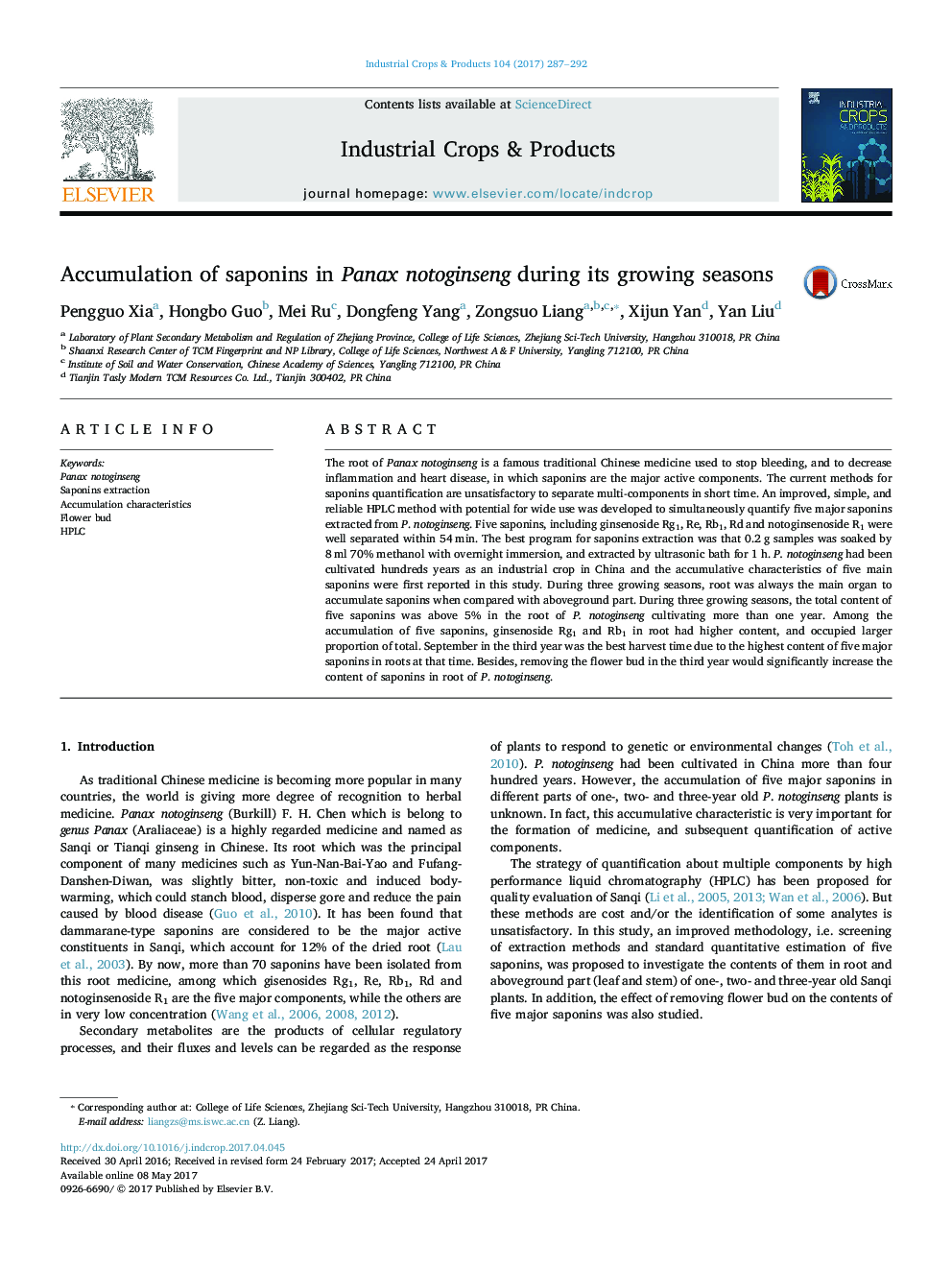| Article ID | Journal | Published Year | Pages | File Type |
|---|---|---|---|---|
| 5761787 | Industrial Crops and Products | 2017 | 6 Pages |
Abstract
The root of Panax notoginseng is a famous traditional Chinese medicine used to stop bleeding, and to decrease inflammation and heart disease, in which saponins are the major active components. The current methods for saponins quantification are unsatisfactory to separate multi-components in short time. An improved, simple, and reliable HPLC method with potential for wide use was developed to simultaneously quantify five major saponins extracted from P. notoginseng. Five saponins, including ginsenoside Rg1, Re, Rb1, Rd and notoginsenoside R1 were well separated within 54Â min. The best program for saponins extraction was that 0.2Â g samples was soaked by 8Â ml 70% methanol with overnight immersion, and extracted by ultrasonic bath for 1Â h. P. notoginseng had been cultivated hundreds years as an industrial crop in China and the accumulative characteristics of five main saponins were first reported in this study. During three growing seasons, root was always the main organ to accumulate saponins when compared with aboveground part. During three growing seasons, the total content of five saponins was above 5% in the root of P. notoginseng cultivating more than one year. Among the accumulation of five saponins, ginsenoside Rg1 and Rb1 in root had higher content, and occupied larger proportion of total. September in the third year was the best harvest time due to the highest content of five major saponins in roots at that time. Besides, removing the flower bud in the third year would significantly increase the content of saponins in root of P. notoginseng.
Keywords
Related Topics
Life Sciences
Agricultural and Biological Sciences
Agronomy and Crop Science
Authors
Pengguo Xia, Hongbo Guo, Mei Ru, Dongfeng Yang, Zongsuo Liang, Xijun Yan, Yan Liu,
